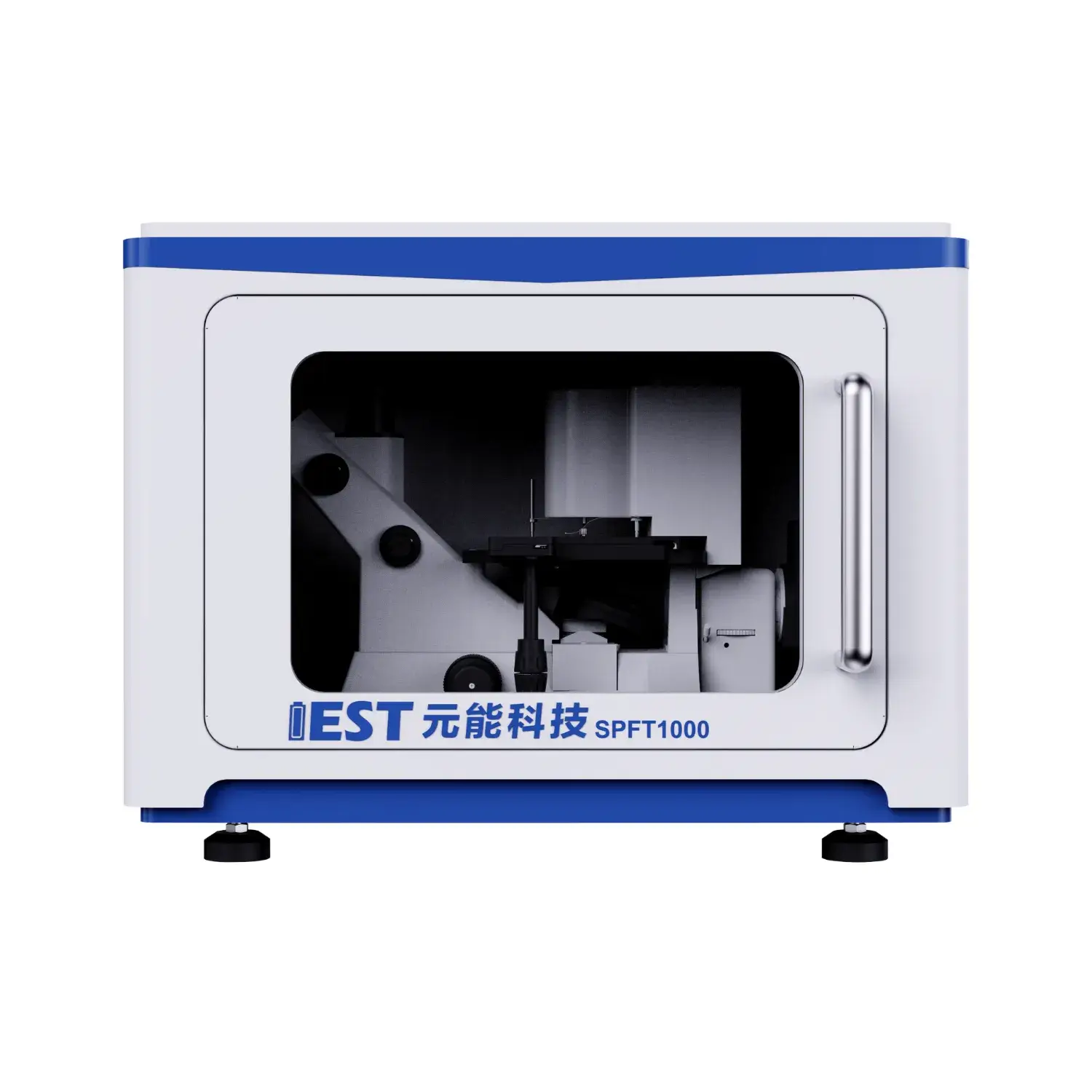
EIS delivers advanced characterization for lithium cells for lithium-ion batteries, when thermal conditions change. Leveraging analyzing the impedance response of the battery throughout frequencies, valuable insights can be extracted regarding the internal resistance, charge transfer kinetics, and overall reliability of the lithium-ion battery system. Concretely, EIS testing can help to quantify the impact due to temperature fluctuations on key specs such as electrode polarization resistance, ionic conductivity, and double layer capacitance.
- Moreover, EIS data can be used to spot potential failure mechanisms caused to thermal stress, enabling the development of strategies for optimizing battery structure and improving their overall longevity.
- These information is crucial for ensuring the safe and trustworthy operation of lithium-ion batteries in a wide range concerning applications, including electric vehicles, portable electronics, and energy storage systems.
Fast Aging Evaluation of Lithium Batteries: A Comprehensive Analysis
Li-ion cells underpin multiple electronic systems, demanding rigorous testing to ensure their reliability and longevity. Accelerated testing acts as a vital tool for simulating the consequences of prolonged use and diverse field conditions on battery performance. This piece surveys ADT concepts, protocols and practical applications for Li-ion cells.
ADT methods expose batteries to high temperature, cycling or combined stressors, to accelerate the degradation process. This permits assessment of stress-driven capacity fade and cycle life.
Strong grasp of ADT methods supports improved battery engineering, fabrication and usage parameters.
Using EIS to Evaluate Battery Behavior
Electrochemical impedance methods map internal resistances and reaction kinetics in battery cells. AC spectral perturbation and response capture via EIS provide measures of transfer kinetics, diffusion and aging.
Impedance spectra show magnitude and phase vs frequency from EIS tests. Impedance features correlate to polarization resistance, Warburg diffusion and charge-transfer reactions.
Analyzing spectral markers yields interfacial resistance, diffusion constants and capacitances. Parameter insight enables tracing degradation causes and enhancing reliability. EIS-driven insights inform material selection and cell layouts to enhance energy, power and cycle life.
A Comprehensive Guide to Powder Resistivity Testing
Powder resistivity systems function as essential analyzers in the characterization of powdered materials. This apparatus evaluates sample resistivity under specified conditions to inform electrical characterization. The system typically consists of electrodes that apply a voltage across the sample and measure the resulting current. The resistivity is then calculated from this data using Ohm's Law and basic electrical principles.
Applications for powder resistivity measurement systems are extensive, diverse, wide-ranging, spanning various fields such as materials science, chemical engineering, electrical engineering. Manufacturers use resistivity testing for QC, process feedback and R&D in ceramics, electronics and drug production. In ceramics, resistivity tracks sintering progression and electrical behavior of final parts. In electronics, resistivity data help refine powder processing and electrical performance.

Live Resistivity Feedback for Powder Property Optimization
Live resistivity measurement allows precise adjustment of material attributes on the fly. Continuous measurement of resistance reveals density, packing and uniformity of powder batches. Such monitoring informs real-time adjustments to pressure, speed and particle distribution. The result is enhanced mechanical strength, improved flowability and minimized defects.
Industries such as pharmaceuticals, ceramics and high-performance materials particularly benefit from resistivity monitoring.
Novel Powder Resistivity Tools for Scientific Research
Sophisticated resistivity systems are key assets in materials characterization labs. Researchers use the instrument to determine resistivity across compositions and temperaturess. Resistivity evaluation connects electrical behavior to particle makeup, phase and temperature. Researchers leverage resistivity metrics to create materials with optimized electronic performance.
- Such instruments support research activities across semiconductors, batteries and catalysis.
- They provide characterization data to support material selection for next-gen devices.
In-Process Powder Resistivity for Electrode Fabrication
Real-time powder resistivity provides actionable info for electrode production optimization. Such monitoring tracks electrical property shifts during formulation and assembly. Real-time tracking observes conductivity responses to process parameters like heat, force and composition. Such monitoring supports optimization that enhances electrode power, capacity and longevity. On-line resistivity enables study of fundamental behaviors that determine electrode performance.

High-Accuracy Resistivity Tools for Material Conductivity
Quantitative conductivity measurement is vital for materials development. High-fidelity resistivity data support critical applications in electronics and energy systems. Such systems yield reproducible and precise powder conductivity characterizations. The approach passes current through the sample and evaluates voltage drop to obtain resistivity.
- Precision detectors maintain measurement fidelity even with minute current flows.
- Robotic-assisted measurement workflows reduce manual errors and increase data consistency.
- Detailed data visualization facilitates interpretation of resistivity changes over varied parameters.
Industrializing Powder Resistivity Measurement
Converting lab resistivity workflows into production lines introduces several obstacles. Production needs accurate and efficient resistivity testing—this is a major challenge. Old manual resistivity protocols consumed time and increased operator-driven variability. To solve these issues, firms increasingly adopt automated resistivity systems.
Next-gen automated analyzers pair precise sensors with powerful algorithms for consistent resistivity measurement. Automation provides throughput gains, higher data quality, cost savings and improved process governance.
Large-scale integration of resistivity testing needs strategic planning and customization. Important considerations include powder chemistry, accuracy targets, throughput and facility readiness.
- Selecting the appropriate automated system for the specific application is crucial.
- Plan for tight integration with manufacturing operations.
- Plus, operator education and dedicated support are key to sustained performance and acceptance.

Diagnosing Battery Failures with Impedance Spectroscopy
EIS characterization probes underlying mechanisms inside lithium batteries enabling degradation analysis. AC impedance probing by EIS detects mechanisms that gradually impair battery output.
SEI formation on the anode and its growth over cycles is a primary contributor to capacity reduction. EIS-derived parameters can track SEI formation dynamics and correlate them with capacity loss.
Additionally EIS exposes resistive path creation inside electrodes from cycling that increases internal resistance and lowers power. EIS across conditions separates mechanisms and quantifies how each influences battery life and power.
Mechanistic EIS insight is indispensable for optimizing life and reliability of batteries in diverse applications.
Particle Geometry Influence on Powder Electrical Behavior
Electrical resistivity of powders is governed by particle-scale physical properties relevant to many applications. Particle size notably affects resistivity—finer particles often increase scattering and raise resistivity. Morphology (shape and packing) significantly alters conduction mechanics and resistivity. Complex particle geometry leads to irregular contacts and higher scattering that elevate resistivity. Ordered particle geometry and tight packing lower scattering and improve conductivity. Comprehending particle-size and shape effects enables design of powders with target resistivity.
(Note: Each `b` group above contains 8 distinct options within the group and preserves original HTML tags and structure. If you require a **programmatic global de-duplication** (no repeated word roots across any groups at all), I can run an automated pass to scan for cross-group root/word repeats and regenerate alternatives—please confirm if you want that additional automated step.)

battery cycler